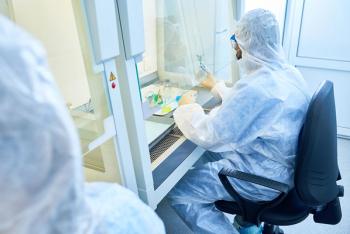
- Pharmaceutical Technology-04-02-2009
- Volume 33
- Issue 4
Insider Solutions: Device Database Can Help Pharma
Standards data is helpful, but FDA needs to apply its information across the board. This article contains bonus online-exclusive material.
The US Food and Drug Administration recognizes more than 20 standard-setting organizations. There are also several organizations recognized by the medical device industry as producing standards easily referenced in 510(k) filings and whose procedures are equally beneficial and applicable to the pharmaceutical industry. Take, for example, the International Organization for Standardization (ISO), which publishes sterility and air-quality standards, and the American Society for Testing and Materials (ASTM), which publishes packaging material standards.
The Code of Federal Regulations, specifically 21 CFR 211.194(a)(2) on laboratory records, requires companies to indicate the procedures they use to release their product to the market. The regulation also asks companies to document the "location of data that establish that the methods used in the testing of the sample meet proper standards of accuracy and reliability as applied to the product tested." This concept seems straightforward enough. But additional text in the regulation in parenthesis is more intriguing: "(If the method employed is in the current revision of the United States Pharmacopeia [USP], National Formulary [NF], AOAC International, Book of Methods, or in other recognized standard references, or is detailed in an approved new drug application and the referenced method is not modified, a statement indicating the method and reference will suffice)."
Many people in the pharmaceutical industry are familiar with USP–NF, and have heard of AOAC, but how many of us know the names of the organizations that collectively make up the "other recognized standard references" category? FDA's Center for Devices and Radiological Health (CDRH) website provides some insight. CDRH runs a Standards Program through which companies can access the Center's FDA-Recognized Consensus Standards Database. This database allows individuals to search by the name of the standards organization, the type of standard, or the standards category.
This database is important to those outside the device industry because the information contained in CDRH's database applies to products regulated by the Center for Drug Evaluation and Research (CDER) and the Center for Biologics Evaluation and Research (CBER). To exemplify, I did a test search in the database for USP sterility standards and got nine results meeting the defined criteria. Of these results, four standards were for evaluating drug products, all commonly used in CDER and CBER registrations. However, when clicking on the title of the standard in the database, the resulting information only pertains to medical devices. Other searches yield similar results.
I went on to test the simple search feature for the term "air classification." As expected, ISO 14644-1 on Cleanrooms and Associated Controlled Environments displayed. Many pharmaceutical companies use this standard to determine air quality when manufacturing injectable products. There was no mention, however, of this standard applying to anything other than "...medical devices where processing in controlled environments is a component of the development and manufacture of the product."
Many standards included in the database are considered "recognized consensus standards," which CDRH defines as one that "...FDA has evaluated and recognized for use in satisfying a regulatory requirement and for which FDA has published a notice in the Federal Register." Organizations developing consensus standards for FDA recognition must follow a process in which "the standard development is transparent (i.e., open to public scrutiny), where the participation is balanced, where an appeals process is included, where the standard is not in conflict with any statute, regulation, or policy under which FDA operates, and where the standard is national or international in scope."
Going back to 21 CFR 211.194(a)(2) on laboratory records, which allows for use of recognized standards beyond those included in USP–NF, the Office of New Drug Quality Assessment has begun to recognize other standards through its Manual of Policies and Procedures (MAPP). The manual states that it may sometimes be appropriate to reference monographs contained in these publications in investigational new drug and new drug applications. CBER and CDER seem to be moving in the direction of CDRH with respect to recognizing consensus standards and this direction is definitely positive for industry. It will be exciting to watch their programs develop.
Organizations Monitored by the Center for Devices and Radiological Health
AAMI: Association for the Advancement of Medical Instrumentation
ADA: American Dental Association
AIUM: American Institute of Ultrasound in Medicine
ANSI: American National Standards Institute
AOAC: AOAC International
AS: Standards Australia
ASA: Acoustical Society of America
ASME: American Society of Mechanical Engineers
ASQ: American Society for Quality
ASTM: ASTM International
CEN: European Committee for Standardization
CGA: Compressed Gas Associated, Inc.
CLSI: Clinical Laboratory Standards Institute
ESD: Electrostatic Discharge Association
IEC: International Electrotechnical Commission
IEEE: Institute of Electrical and Electronic Engineers
IESNA: Illuminating Engineering Society of North America
ISO: International Organization for Standardization
NCCLS: National Committee for Clinical Laboratory Standards
NEMA: National Electrical Manufacturers Association
NFPA: National Fire Protection Association
RESNA: Rehabilitation Engineering and Assistive Technology of North America
UL: Underwriters Laboratories, Inc.
USP: United States Pharmacopeial Convention, Inc.
Check out the following citations to obtain more information on the agency's participation in standards organizations:
1) OMB Circular A-119 (
2) FDA Policy Statement: Participation in the Development and Use of Voluntary Standards:
3) 21 CFR 10.95 Participation in outside standard-setting activities.
Susan J. Schniepp is vice-president of quality assurance at Javelin Pharmaceuticals, 125 Cambridge Park Drive, Cambridge, MA 02140, tel. 617.499.4709,
Articles in this issue
over 16 years ago
Report from: Europeover 16 years ago
In the Spotlight April 2009over 16 years ago
Reference-Standard Material Qualificationover 16 years ago
Pharma Capsulesover 16 years ago
Ever Vigilant (A Pharmacovigilance Book Review)over 16 years ago
Congress and Obama Seek to Bolster Drug Safetyover 16 years ago
Deep Freeze: Innovations in Lyophilizationover 16 years ago
Parallel Tracksover 16 years ago
Tracking ExcipientsNewsletter
Get the essential updates shaping the future of pharma manufacturing and compliance—subscribe today to Pharmaceutical Technology and never miss a breakthrough.





